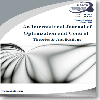Optimization of flexo process parameters to reduce the overall manufacturing cost
Optimization of flexo process parameters to reduce the overall manufacturing cost
___
- [1] Mordor Intelligence Report (2020). Flexible Plastic Packaging Market by Type (Pouches, Rollstocks, Bags, Wraps), Material (Plastic & Aluminum Foil), Application (Food, Beverage, Pharma & Healthcare, Personal care & Cosmetics), Technology, and Region - Global Forecast to 2025 [online]. Available from: https://www.marketsandmarkets.com/Market- Reports/flexible-packaging-market-1271.html. [Accessed 20 May 2021].
- [2] Indian Diaper Market (2016). India Diaper Market Overview, 2016 - Research and Markets [online]. Available from: http://www.businesswire.com/news/home/20161128 005918/en/India-Diaper-Market-Overview-2016--- Research. [Accessed 20 May 2021].
- [3] Kipphan, H. (2001). Handbook of Print Media Springer-Verlag, Heidelberg, Berlin.
- [4] Rogers A. (2011). Choosing the right anilox-roll engraving for the application [online]. Available from: http://www.harperimage.com/media/downloads/Ch oosing%20the%20right%20engraving_Converting %20Q%204thQrtr2011.pdf. [Accessed 20 May 2021].
- [5] Ardent D. (2006). Ink Mileage: Measure & Manage [online]. Available from: http://www.pffc- online.com/process-management/5017-paper-ink- mileage-measure. [Accessed 20 May 2021].
- [6] Rastetter J., & Bingham J. (2016). Lower Your Anilox Line Screen and Cell Volume for Better Performance FlexoGlobal [online]. Available from: http://www.flexoglobal.com/blog/2016/08/01/pama rco-lower-anilox-line-screen-cell-volume/. [Accessed 20 May 2021].
- [7] Teufler S. (2010). Weighing Your Coating Options [online]. Available from: http://www.harperimage.com/media/downloads/We ighing%20Your%20Coating%20Options%20FLEX O%20Feb%202010.pdf. [Accessed 22 May 2021].
- [8] Teufler S. (2015). Anilox Rollers - Choosing the Right Lineature [online]. Available from: http://www.harperimage.com/media/downloads/Ani lox%20Rollers_Choosing%20The%20Right%20Li neature_Flexible%20Packaging%20Issue%201.pdf. [Accessed 22 May 2021].
- [9] Hogan P. (2018). Aniloxes - Yesterday, Today and Tomorrow [online]. Available from: http://www.harperimage.com/media/downloads/Ani loxes_Yesterday%20Today%20and%20Tomorrow _%20L&NW%20NovDec%202018.pdf. [Accessed 22 May 2021].
- [10] Harper C. (2005). Do you know what ink film thickness is transferred [online]. Available from: http://www.harperimage.com/media/downloads/Har per_FGA_1_2005.pdf. [Accessed 22 May 2021].
- [11] Green C. (2013). Understanding Common Flexo Print Defects - Part 2 FlexoGlobal [online]. Available from: http://www.flexoglobal.com/blog/tag/anilox/page/4/ . [Accessed 22 May 2021].
- [12] Poulson B. & Hudson K. (2010). Correlating Ink Labs Drawdown to Press [online]. Available from: http://www.harperimage.com/media/downloads/Ra dtech%20Report%20Sep-Oct%202010.pdf. [Accessed 24 May 2021].
- [13] Harnandez R. (2019). Releasing the Anilox’s Power [online]. Available from: http://www.harperimage.com/media/downloads/Rel easing%20Anilox%20Power_FLEXO%20Jan%202 019.pdf. [Accessed 24 May 2021].
- [14] Olson, R., Yang, L. Stam J. V., & Lesrelius, M. (2006). Effects of ink setting flexographic printing: Coating polarity and dot gain. Nordic Pulp and Paper Research Journal, 21(5), 569–574.
- [15] Gencoglu, E. N. (2012). Influence of Ink Viscosity on Dot Gain and Print Density in Flexography. Asian Journal of Chemistry, 24(5), 1999–2002.
- [16] Theopold, A., Neumann, J., Massfelder, D., & Dörsam, E. (2012). Effects of Solvents on Flexographic Plates. Advances in Printing and Media Technology, 39, 159–168.
- [17] Simseker, O. (2011). Investigation of Different Solvents in Flexographic Printing Ink’s Effects to Print Quality on Coated and Uncoated Paper. Asian Journal of Chemistry, 23(7), 2903–2906.
- [18] Hizir, F.E., & Hardt, D.E. (2014). Effect of Substrate Contact Angle on Ink Transfer in Flexographic Printing [online]. Available from: http://www.comsol.co.in/paper/download/194575/h izir_paper.pdf. [Accessed 26 May 2021].
- [19] Izdebska, J., Podsiadlo, H., & Hari, L. (2012). Influence of Surface Free Energy of Biodegradable Films on Optical Density of Ink Coated Fields of Prints. Advances in Printing and Media Technology, 39, 245–252.
- [20] Rong, X., & Keif, M. (2007). A Study of PLA Printability with Flexography. The Technical Association of the Graphic Arts, 3, 605–613.
- [21] Mesic, B., Lestelius, M., & Engstrom, G. (2006). Influence of Corona Treatment Decay on Print Quality in Water-borne Flexographic Printing of Low-density Polyethylene-coated Paperboard. Packaging Technology and Science, 19(2), 61–70.
- [22] Valdec, D., Zjakić, I., & Milković, M. (2013). The Influence of Variable Parameters of Flexographic Printing on Dot Geometry of Pre-printed Printing Substrate. Tehnički vjesnik, 20(4), 659–667.
- [23] Claypole, T.C., Jewell, E.H., & Bould, D.C. (2012). Effects of Flexographic Press Parameters on the Reproduction of Colour Images. Advances in Printing and Media Technology, 39, 187–194.
- [24] Gilbert, D.E., & Lee, F. (2008). Flexographic Plate Technology: Conventional Solvent Plates Versus Digital Solvent Plates. Journal of Industrial Technology, 24(3), 1–7.
- [25] Bould, D.C., Claypole, T.C., & Bohan, M.F.J. (2004). An Investigation into Plate Deformation in Flexographic Printing. Journal of Engineering Manufacture, 218(11), 1499–1511.
- [26] Ebnesajjad, S., & Landrock, A. (2015). Surface Tension and Its Measurement. In: S. Ebnesajjad, 3rd ed. Adhesives Technology Handbook. William Andrew, Elsevier Inc, 19–29.
- ISSN: 2146-0957
- Yayın Aralığı: 4
- Yayıncı: Prof. Dr. Ramazan YAMAN
On a special case of non-symmetric resource extraction games with unbounded payoffs
Comparative assessment of smooth and non-smooth optimization solvers in HANSO software
Analysis of make-to-stock queues with general processing times and start- up and lost sales costs
Theory and applications of new fractional-order chaotic system under Caputo operator
Multi-objective regression modeling for natural gas prediction with ridge regression and CMARS
Optimization of flexo process parameters to reduce the overall manufacturing cost
